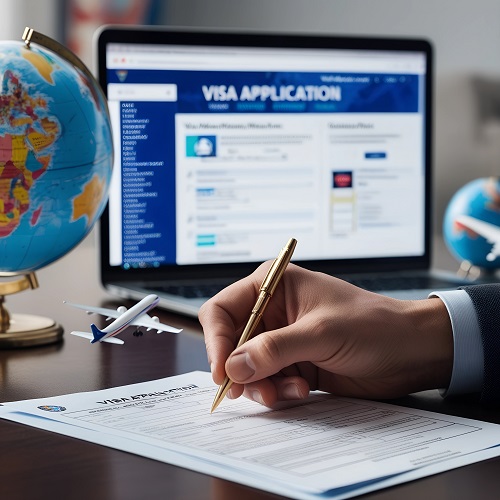Student & Exchange Visitor Visa



Pursuing education overseas is an exciting opportunity that opens doors to personal growth and global connections. However, before you pack your bags and head off to your chosen university or exchange program, there’s one crucial step you need to take — obtaining a Student & Exchange Visitor Visa (SEVP).
This guide breaks down everything you need to know about the Student & Exchange Visitor Visa, from its purpose and significance to the application process. If you’re applying to study abroad as an international student or participate in an exchange program, keep reading to ensure your visa process is smooth and hassle-free.
What is the Student & Exchange Visitor Visa (SEVP)?
The Student & Exchange Visitor Visa, managed under the U.S. Department of Homeland Security’s Student and Exchange Visitor Program (SEVP), is a special visa designed for international students and participants in cultural exchange programs. This visa allows individuals to legally enter the United States to pursue academic studies, vocational training, or cultural exchange activities.
SEVP ensures that international students and exchange visitors meet all legal requirements while attending U.S. schools or taking part in exchange programs. Furthermore, it monitors institutions authorized to enroll foreign students, ensuring compliance with governmental regulations.
Why is the SEVP Important?
The SEVP system plays a critical role in international education and cultural exchange by providing: Legal Authorization: Ensures that you can legally enter and stay in the U.S. for your educational or exchange purposes. Credibility: Accreditation standards guarantee that you're attending a legitimate and qualified program. Support and Monitoring: Helps both students and schools remain compliant with visa and enrollment regulations. Without the SEVP system, international students and institutions offering exchange opportunities couldn’t operate effectively under U.S. immigration laws.
Types of Student & Exchange Visitor Visas
Depending on the type of program you're participating in, there are three main types of SEVP visas:
F-1 Student Visa
The F-1 Student Visa is the most common visa for individuals seeking academic education in the U.S. This visa covers: Enrollment in an accredited college, university, high school, or language training program. Full-time student status in an SEVP-approved institution. F-1 students are also eligible for limited work opportunities under specific conditions, such as on-campus jobs, Curricular Practical Training (CPT), or Optional Practical Training (OPT).
M-1 Student Visa
The M-1 Visa caters to students attending vocational or technical programs. Examples might include culinary courses, mechanical studies, or cosmetology certifications. Unlike F-1 students, M-1 visa holders have stricter limitations on employment opportunities.
J-1 Exchange Visitor Visa
The J-1 Exchange Visitor Visa is issued to individuals participating in cultural exchange programs, such as: University exchange programs. Government-sponsored initiatives. Work-based training programs. Au pair programs. J-1 visas often require participants to return to their home country for at least two years after the program ends (the "two-year rule"), though waivers can sometimes be requested.
Challenges Faced with SEVP Visas
While Study & Exchange Visitor Visas unlock tremendous opportunities, the process can be challenging. Here are some common hurdles and how to overcome them:
Complex Application Process
Filling out lengthy forms, providing supporting documentation, and following procedural timelines can feel overwhelming. Attention to detail is key, so double-check deadlines and requirements.
Demonstrating Financial Stability
You’ll need to present proof that you can financially support yourself during your stay. Documents like bank statements, scholarship letters, or sponsorship guarantees may be required.
Visa Denials
Applications may be denied for reasons such as insufficient documentation, lack of financial proof, or failing to show "non-immigrant intent". To mitigate this, ensure all forms are completed properly and clearly explain your educational intentions.
Long Waiting Times
Processing times for student and exchange visas can vary by location and season. Apply as early as possible to avoid unexpected delays.
How to Obtain a Student & Exchange Visitor Visa
Below, we outline the key steps to securing your SEVP visa:
Get Accepted into an SEVP-Approved Program
Before applying for a visa, you must first gain admission to a U.S.-based educational institution authorized by SEVP. You can find a list of certified schools and exchange sponsors on the SEVIS website.
Receive Form I-20 or DS-2019
Once accepted, your institution or program sponsor will provide you with the necessary documentation: I-20 Form (F-1 or M-1 programs): This certifies your acceptance into an academic or vocational institution. DS-2019 Form (J-1 programs): This certifies your participation in an exchange visitor program. Hold onto these documents carefully—they are essential for your visa application.
Pay the SEVIS Fee
A mandatory SEVIS I-901 fee must be paid online to register you in the Student and Exchange Visitor Information System (SEVIS). Remember to print your payment receipt, as you'll need it during your visa interview.
Complete the DS-160 Form
The DS-160 is an online visa application form that requires detailed information about your personal data and travel details. After submitting, you will receive a confirmation page with a barcode—save and print this for your records.
Schedule Your Visa Interview
Schedule an appointment at the nearest U.S. embassy or consulate. Visa wait times vary by location, so it’s best to book early. Depending on the embassy, scheduling might require payment of an additional application fee.
Prepare for Your Visa Interview
During your interview, a consular officer will evaluate your eligibility for the visa. Be prepared to answer questions about: The program you'll be attending. Funding sources for living and tuition expenses. Your plans to return to your home country after completing your studies. Remember to bring the following documents: A valid passport. Form I-20 or DS-2019. SEVIS payment receipt. DS-160 confirmation page. Proof of financial capability. Any additional documents required by the embassy.
Receive Your Visa
If approved, you’ll receive your visa along with instructions on how to collect it. Congratulations—you’re now ready to begin your international adventure!
Final Thoughts on Securing Your SEVP Visa
The Student & Exchange Visitor Visa unlocks invaluable opportunities to learn and grow in a global academic and cultural environment. While the application process requires careful preparation and attention to detail, it’s a vital step in pursuing your dreams abroad. Need additional guidance on your SEVP visa process? Stay connected to our blog for the latest updates, resources, and tips to help you transition seamlessly into your educational or exchange program in the U.S. The adventure begins now—start planning today!

World Connect Immigration
WCI provides a very fast and responsible advice legal service.
Copyright 2025 World Connect Immigration, All Right Reserved








